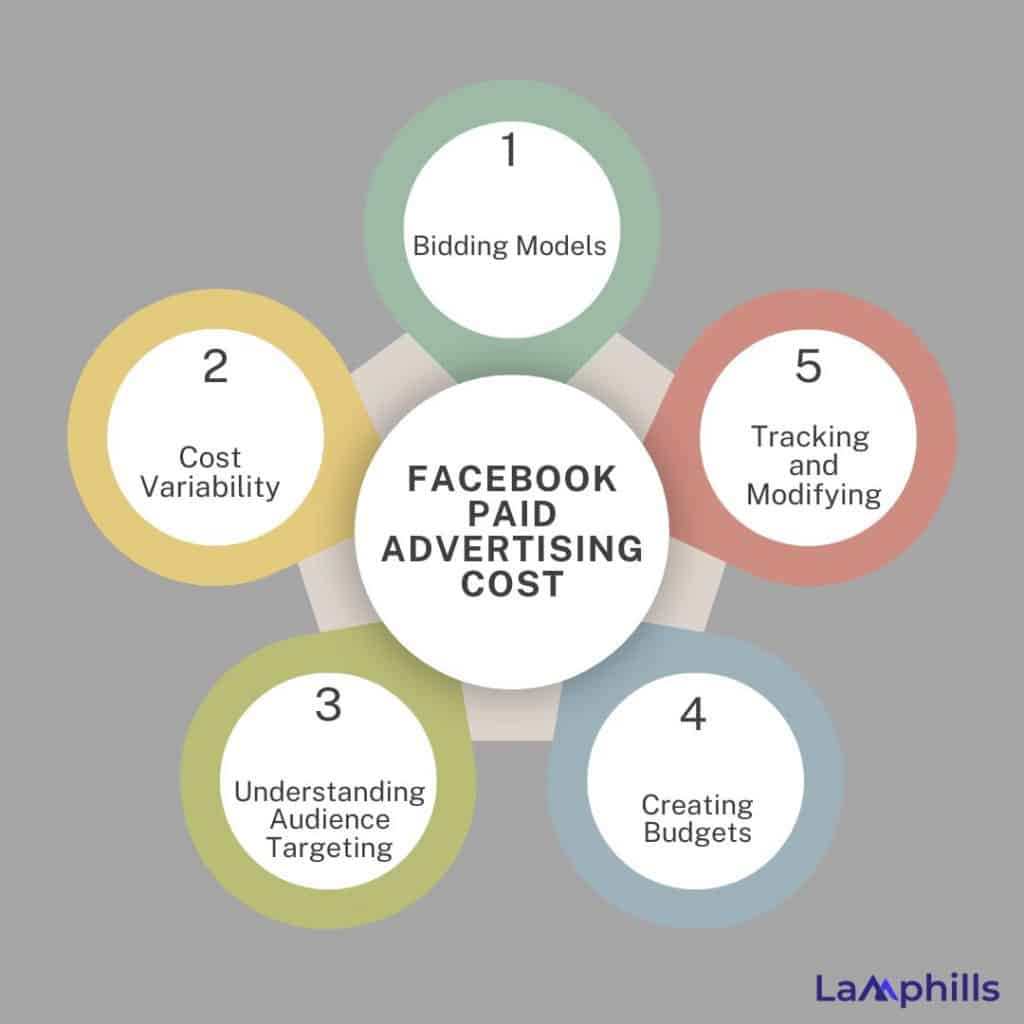Facebook paid advertising caught my attention as a promising potential when I first started my adventure into the realm of digital marketing. With billions of users globally, I was confident that this platform might improve the reputation and visibility of my brand. However, I soon discovered that launching Facebook advertising required more than a budget to successfully handle the complexity of expenses, audience targeting, and ad effectiveness. Through trial and error, I learned how to use Facebook’s advertising features to reach potential clients and enhance brand perception. This article will discuss Facebook paid advertising from my own experience, including its expenses and tips for using strategic ad placement to improve brand reputation.
Key Points
- Facebook paid advertising allows companies to market goods and services to specific people, increasing brand awareness and interaction.
- Depending on your budget, Facebook advertising charges might range from $0.50 to $2.00 per click or $5 to $15.00 per thousand impressions.
- Setting up an ad account, managing advertisements, and connecting your Facebook page all require a Facebook Business paid account.
- By using demographics and interests to determine your target audience, businesses can make sure Facebook paid advertising reaches the correct prospective clients.
- Facebook’s Advertisement Manager allows businesses to establish campaigns and monitor results after creating advertisements, allowing for ongoing improvement.
Understanding Facebook Paid Advertising
Facebook ads are paid advertisements that companies post their brands on. This allows you the freedom to write in your style. Among the most crucial words in this description is “paid.” Although posting on Facebook is free for everyone, you have no idea who may see it. You can be as specific or as general as you like when targeting a specific demographic with a paid advertisement. Facebook ad campaigns come in different types. Additionally, you have the option to select your spending limit, which includes:
- The total sum.
- Your monthly spending plan.
- Your price per outcome.
You may even choose which user activity you wish to pay for. This does not imply that Facebook will only charge you when your advertisement performs as you would like it to, but you do have the option to be billed based on the number of views or clicks. The objectives you establish for your advertisement will determine your options.
Also Read: A Guide to Paid Media Management: Best Strategies
When I initially began looking at Facebook paid advertising, I was aware that using such a well-known network may drastically change the reputation and reach of my brand. However, it wasn’t as easy as I thought to get started. To make my brand seem genuine to my audience, I had to carefully manage expenses, comprehend the advertising system, and develop my brand’s reputation.
Entering the Facebook advertising space seemed like stepping into a wonderland of targeted opportunities. Because Facebook has 2.7 billion active users, companies may target audiences with a wide range of interests, demographics, and geographic locations. Facebook advertising’s precision lies at its core. My ads could be tailored to target particular demographics, hobbies, habits, and age groupings, which made it simpler to engage with people who would genuinely appreciate my brand.
Facebook Paid Advertising Cost
One of my main worries when I started using Facebook paid advertising was not knowing how much it would cost. I soon discovered that Facebook provides flexibility that may fit practically any budget, although there were a lot of factors involved. I successfully managed the expenses in the following ways:
#1. Bidding Models
Many bidding alternatives are available on Facebook, with Cost-Per-Click (CPC) and Cost-Per-Thousand-Impressions (CPM) being the most popular. I tried both to determine which was more effective for my marketing. When it came to advertising aimed at increasing website traffic, I first tended toward CPC. By only paying when users clicked on my advertisement, I was able to make sure that my budget was being used efficiently. I discovered that CPM was effective for brand awareness ads where visibility was more important than instant clicks as I got to know the platform better.
#2. Cost Variability
Costs may vary depending on many factors, such as audience size, ad relevancy, and competition, as I soon discovered. As a result of the increasing competition for ad space, I observed a rise in costs during periods of high advertising demand, such as the holidays. Creating high-quality advertisements that connected with my target demographic was my main strategy to combat this. For me, this became a crucial tactic: Facebook lowers the cost of advertising and has greater engagement and validity.
#3. Understanding Audience Targeting
Targeting the right audience is one of the best methods to control expenses. To make sure my advertising reached the most relevant viewers and cut down on wasted ad spend, I created unique audiences based on user data and habits. Every dollar spent became more significant when I discovered that focusing on a certain audience increased the conversion rate.
#4. Creating Budgets
A regular or lifetime paid budget can be put forth for Facebook advertising. I began by creating a daily budget to carefully control my expenditures. For instance, I gave my first campaign a small daily budget so I could keep a careful eye on results without going overboard. My confidence grew over time, and I eventually moved to lifetime budgets for particular campaigns, which gave me more freedom to maximize ad spending throughout the campaign.

#5. Tracking and Modifying
It became crucial to continuously monitor the campaign’s performance. I frequently examined indicators such as return on ad spend (ROAS) and cost-per-result to assess how well my ads were working. By doing this, I was able to optimize outcomes and make sure I was receiving the highest return on my investment by modifying my allocations of funds and bidding tactics.
It took some time to figure out how much Facebook paid advertising costs. I discovered a formula that worked for my brand by testing with various budget settings, audience targeting, and bidding tactics. The investment was worthwhile because I observed both increased visibility and a favorable effect on the reputation of my brand. Facebook advertising costs between $1 and $400 per month, depending on the variables, including your target audience, budget, and bidding technique.
How to Use Facebook Paid Advertising to Enhance Your Brand’s Reputation
As I worked with Facebook advertisements, I came to understand that developing a relationship with my audience is just as important as promoting goods or services. I concentrated on enhancing brand reputation through strategic advertisements in the following ways:
#1. Display the Brand’s Values
My brand’s ideals were emphasized in every advertisement. I made sure my brand was clear about its values, whether they were innovation, sustainability, or community service. This strategy gained trust because it spoke to individuals more deeply than merely promoting a product.
#2. Engaging Content
Rather than trying to sell, I concentrated on making amusing and educational advertisements. For example, I posted customer endorsements, industry-related instructional materials, and behind-the-scenes photos. By using this content strategy, I was able to establish my brand as an authority and cultivate a favorable reputation.
#3. Responsive Engagement
Facebook advertisements frequently receive comments, so I made it a point to reply to messages and comments as soon as possible. My prompt responses showed honesty and fostered trust, whether I was responding to inquiries or concerns.
#4. Getting and Presenting Favorable Feedback
I got good feedback when my advertisements took off. To demonstrate to prospective buyers that actual people trusted my brand, I emphasized this in my advertisements. This kind of social proof naturally increased the reputation of my brand.
#5. Regular Message and Visual Alignment
Ad consistency, in my opinion, is essential to creating a known brand. To create a consistent brand identity, I adhered to particular brand colors, fonts, and tones. As a result, my advertisements became instantly recognizable and gained credibility.
Facebook Paid Advertising Campaign Optimization
Enhancing brand recognition is a continuous process. To make sure I was getting the most out of my campaigns, I continuously improved them. The Facebook paid advertising campaign optimization is as follows:
#1. A/B Testing
To determine what appealed to my audience the most, I experimented with various headlines, images, and ad styles. Ads featuring actual images of my staff, for example, outperformed those featuring only product photographs. These tests allowed me to improve my advertisements to better capture the genuine nature of my brand.
#2. Examining Performance Measurements
Facebook offers data on how well ads are doing. Metrics like engagement rate, click-through rate (CTR), and conversion rate allowed me to determine which advertisements worked best. I then concentrated on the ad types that yielded the highest return.
#3. Regular Advertising and Up-to-Date Content
I kept track of how frequently my advertisements showed up for the same visitors because advertising overload can result from constant exposure to the same content without fresh content. To overcome this, I made frequent updates to the messaging and imagery of my advertisements, which engaged my audience and kept them from becoming uninteresting.
#4. Reinvesting in High-Performing Ads
My best-performing advertisements were the ones I reinvested in after identifying them. By allocating my money to these effective advertisements, I was able to effectively control expenses while maintaining the reputation of my brand.
#5. Using Video Content
Since Facebook’s algorithm favors video content, I used brief yet interesting videos to tell my brand’s narrative. At a fair price, these videos’ high level of interaction improved ad effectiveness and increased brand exposure.
How do I start a paid ad on Facebook?
For me, creating a Facebook paid advertising account was a simple process that led to a variety of marketing chances. I followed these steps to get through the setup:
#1. Open a Business Manager account on Facebook.
Initially, I made an account on the Facebook Business Manager system. With this platform, you can manage all of your company’s assets in one location. I typed in my email address, business name, and other necessary information. This step is essential since it offers a single location to manage accounts, pages, and ads.
#2. Add a Facebook page
After creating my Business Manager account, I either made a new Facebook page or linked my old one. Being the public face of my company on Facebook, I made sure this page was optimized with a captivating cover photo, profile image, and description that embodied the essence of my brand.
#3. Create an Advertising Account
After navigating to the “Ad Accounts” area of the Business Manager, I selected “Create Ad Account.” I gave information like the account name, currency, and time zone. For efficient reporting and advertising budget management, this step is crucial.
#4. Set up the Payment Preferences
Following the creation of the advertising account, I configured my payment method. Among the alternatives that Facebook provides are PayPal and credit cards. I supplied my billing details to make sure I could manage ad payments without any problems. I also became familiar with the payment levels and the billing cycle.
#5. Describe the goals and target audience.
I tried to identify and study my target market before starting my first advertising campaign. Given Facebook’s extensive targeting possibilities, I took into account demographics, hobbies, and habits that were essential to my brand. Additionally, I described my campaign’s goals, including if they were to generate leads, increase brand awareness, or drive traffic.
#6. Create Compelling Ads
I started making my advertising after setting up my account and determining my target audience. However, I selected an ad format (single image, video, etc.) and created graphics and language that spoke to my business. I also made sure that my advertisements connected with my target audience and complemented my complete marketing plan.
#7. Execute and Track Campaigns
Once my advertisements were ready, I started my campaign. Facebook Ads Manager offers an easy-to-use interface for tracking results. Reach, engagement, and conversions were among the metrics I frequently monitored, enabling me to make data-driven changes as necessary.
Also Read: How to Create a Facebook Business Page: (+Tips for Growing it)
The Importance of Paid Advertising on Facebook
The value of Facebook paid advertising became more evident to me as I moved through the digital world. Brands wishing to increase their visibility and have meaningful interactions with their audience have access to unmatched chances on the platform. For the following main reasons, I think Facebook paid advertising is essential for any brand:
#1. Broad Reach
Facebook’s enormous user base—billions of accounts are active—offers companies a unique chance to engage with a wide range of consumers. Finding my target market and increasing the visibility of my business is made easier by my wide reach, which allows me to connect with potential clients from a variety of demographics.
#2. Accurate Focus
By using the platform’s advanced targeting features, I can target my audience according to their age, geography, hobbies, and habits. By ensuring that my advertisements are seen by the people who are most likely to interact with my business, this accuracy increases conversion rates and makes better use of my advertising budget.
#3. More awareness of the brand
Brand familiarity has significantly increased as a result of regular ad exposure. The regular appearance of my ads in users’ feedback helps them get to know my brand, which builds credibility and trust. In markets with strong competition, where being unique can boost client loyalty, this enhanced awareness is essential.
#4. Actionable Analytics and Insights
Facebook has powerful analytics capabilities that let me track the effectiveness of my ads in real-time. Through the analysis of indicators such as engagement rates, click-through rates, and conversion rates, I can make quick adjustments to my campaigns. This continuous tuning lets me improve my tactics for upcoming campaigns and guarantees that I’m getting the most return on my investment.
#5. Cost-Effective Solutions
Paying for Facebook ads can be a lot less expensive than using more conventional media like television or print. My daily or lifetime budgets can be adjusted to meet my financial objectives, giving me flexibility in spending while yet producing significant outcomes. Further improving cost control is the option to select between Cost-Per-Click (CPC) and Cost-Per-Thousand-Impressions (CPM).
What is Facebook paid advertising?
Through targeted advertisements, Facebook paid advertising enables companies to advertise their goods and services on the social media platform. Brands can target particular demographics based on geography, interests, and behaviors with these ads, which can show up in users’ feedback, stories, or right-hand columns. Effective lead generation, traffic generation, and brand visibility are all helped by this strategy.
How much does it cost to advertise on Facebook?
Facebook advertising costs vary depending on some factors, such as your target audience, bidding technique, and campaign goals. Businesses should budget about $0.50 to $2.00 per click (CPC) or $5 to $15.00 per thousand impressions (CPM) on average. There is flexibility when you set a daily or lifetime budget because expenses might change based on competition and ad effectiveness.
Conclusion
My brand has completely changed as a result of using Facebook paid advertising. Through careful cost control, the creation of advertisements that convey my brand values, and constant campaign optimization, I have been able to enhance my brand’s reputation in unexpected ways. Facebook advertisements might seem intimidating at first, but with careful preparation and an emphasis on real interaction, they can be an effective tool for increasing brand recognition, loyalty, and trust.
Related Articles
- Top Skills Every Advertising Manager Needs to Succeed
- Tips & Tricks to Create Your Facebook Video Ads to Inspire Your Next Campaign
- How to Create a Facebook Ad: A Step-by-Step Guide for Beginners
- 7 Must-Try Paid Media Services for Businesses
- Paid vs. Organic Search: Which Strategy is Right for You?





